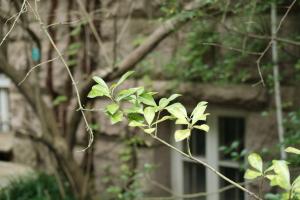Growth habits of tiger tailed orchid
Tiger tailed orchid is native to West Africa. It has strong adaptability, drought resistance, likes sunshine and warmth, is also resistant to shade, avoids water logging, and has lax requirements for soil. Sandy loam with good drainage is better. When potting, you can use 3 parts of fertile garden soil and 1 part of coal cinder, and then add a small amount of bean cake crumbs or bird dung as base fertilizer.

Precautions for breeding of tiger tail orchid
Temperature
The suitable temperature for the growth of Cymbidium is 20 ~ 30 ℃, and the overwintering temperature is 10 ℃. It is not resistant to severe cold. It enters the house in late autumn and early winter. As long as the indoor temperature is above 18 ℃, it can grow normally in winter without dormancy. It blooms from January to February, and it can survive the winter safely if it is not lower than 10 ℃
Illumination
Potted tiger tailed orchid should not be in the shade for a long time. It should often be given scattered light. Otherwise, the leaves will be dark and lack vitality, and the yellow edge will narrow and fade, affecting the beauty. However, it is not allowed to move to the sun suddenly. It should be adapted in the dark first to avoid burning the leaves
Watering
Tiger tailed orchid is drought resistant. It should be watered appropriately, and the principle of better dry than wet should be mastered. Usually wipe the dust on the leaf surface with clean water to keep the leaf clean and bright. When new plants germinate at the root neck in spring, water more appropriately to keep the basin soil moist; The basin soil should also be kept moist in summer and high temperature season; After the end of autumn, the watering amount should be controlled and the basin soil should be kept relatively dry to enhance the cold resistance
Fertilization
It has low requirements for fertilizer and fast growth rate in the growing season. It should be applied with thin liquid fertilizer once or twice a month to ensure green and thick leaves

Propagation mode of tiger tail orchid
Ramet
Suitable for all varieties of Cymbidium, it is generally carried out in combination with changing pots in spring. The method is to cut the overdense leaf clusters into several clusters. In addition to leaves, each cluster also has a section of rhizome and buds, which can be planted in pots respectively.
Cutting
It is only suitable for varieties without golden edge or silver vein on the leaves, otherwise the yellow and white markings on the leaves will disappear and become an ordinary variety of hupilan. The method is to select robust and full leaves, cut them into 5 ~ 6cm long, insert them in sand or vermiculite, expose half of the soil surface, keep a little moisture, and take root in about a month.

 how many times do yo...
how many times do yo... how many planted tre...
how many planted tre... how many pine trees ...
how many pine trees ... how many pecan trees...
how many pecan trees... how many plants comp...
how many plants comp... how many plants can ...
how many plants can ... how many plants and ...
how many plants and ... how many pepper plan...
how many pepper plan...
































